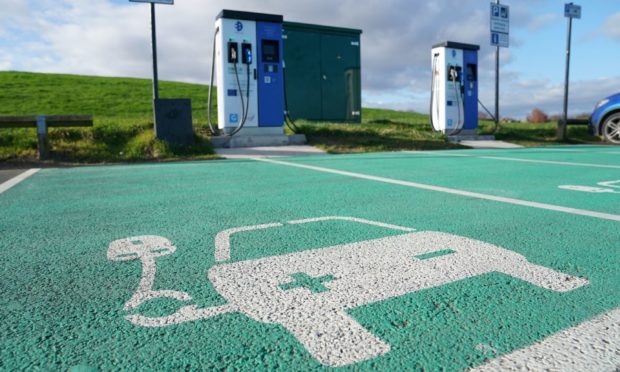Rural Scotland needs an “electric car revolution” with more charging points to drive up ownership of low-carbon vehicles, a Highlands election candidate claims.
The call comes as figures show 107 new electric vehicle chargers were installed for the public in the region over five years.
The proportion of electric cars compared with overall cars and light goods vehicles is smaller in the Highlands and Islands than across Scotland, according to DVLA figures.
Liberal Democrats said the next Scottish Government must urgently increase the pace to meet climate change ambitions.
Official figures show there are more than 1,500 publicly available electric vehicle charge points through the ChargePlace Scotland network. It’s a higher number per head than in England, Wales and Northern Ireland.
There are 185 devices in Highland, 33 in Moray, 98 in Aberdeenshire, 61 in Angus and 104 in Perth and Kinross. Shetland has 17, there are 32 in Orkney and 25 in the Western Isles.
Electric superhighway
The SNP has already proposed turning the A9 into the country’s first “electric superhighway”.
Lib Dem candidate Molly Nolan said: “The next Scottish Government must aid local people to make the environmentally friendly switch to electric vehicles with an electric car revolution.
“Building public confidence starts with rapidly upscaling the rapid charge network, not least kick starting the Electric A9 project. Without that, limited infrastructure will mean limited outcomes.”
The party wants to convert the whole public sector vehicle fleet to electric.
The SNP manifesto for the Holyrood 2021 election commits to phasing out the need for new petrol and diesel cars and vans by 2030, two years ahead of the original target.
Election promises
Conservatives published an infrastructure manifesto on Friday with a focus on opening more railway stations and former lines including the Formartine and Buchan route in the north-east.
Scottish Government transport minister Michael Matheson, in parliament last month, said the SNP administration provided more than £45 million to councils to increase the network of charge points.
He said around 40% of chargers were outwith urban areas by late 2020.
“Due to the wide range of factors that will influence and ultimately determine the number of chargers required across Scotland, it is not possible to define the number of chargers needed in the Highlands and Islands to deliver against emissions targets,” he added.
“Our focus will continue to be on working with the public and private sector to ensure that, as coverage grows, all parts of Scotland continue to benefit from one of Europe’s most extensive charging networks.”











